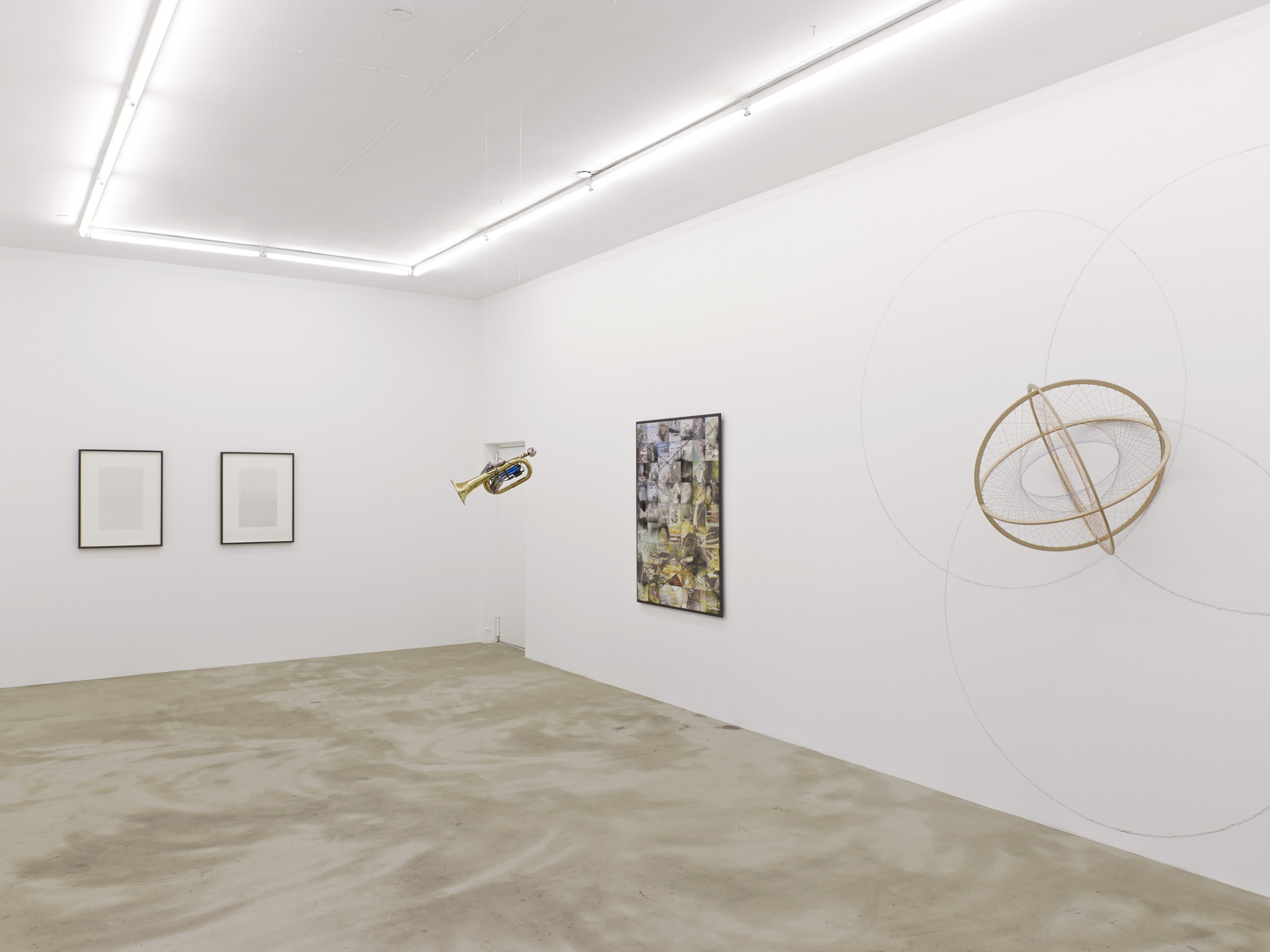Benja Sachau • There Were Rumors • 02.11.–14.12.2013
In his second solo exhibition at Soy Capitán, Berlin-based artist Benja Sachau is concerned with far more than just vague rumors and cryptic secrets.
Sachau’s conceptually calculated objects are multimedia implementations of the impossible: rumors of scientific discoveries with fatal consequences, consciously manipulated propaganda information, forgotten specialist knowledge, myth, parascientific belief constructs and half truths – such are his themes. He formulates them in objects such as ‘Die große Konjunktion’ (The Great Conjunction, 2013), a wall piece of hula hoops and nylon cord; two tile works in ceramics and Plexiglas, ‘Companion’ (2013) and ‘To Whom It May Concern’ (2013); two works on paper, ‘There were rumors’ and ‘Schlüssel (M16)’ (Code (M16), 2013); and a sound object: an apt trumpet with the title ‘Beltone 222’ (2013).
Sachau deals with themes such as the discourse on power and domination in politics, religion and science as societal processes, and the calculated games they sometimes play with the control, or losing control, of the mass media. Entirely in line with the critical stance of Marshall McLuhan’s ‘Understanding Media’ (1964), Sachau also puts the medium of communication in the spotlight and makes it the message.
For example, we get a sense of how the spoken word becomes an instrument of power when listening to the annuciatory trumpet of ‘Beltone 222’. Like a news satellite, this autarchic wind instrument functions on solar power. In an endless looped message, the trumpet blares out the uncanny voice of sect leader Reverent Jim Jones, founder of the Peoples Temple cult, whose nine hundred followers committed mass suicide in the Guyanan rainforest in 1978. Sachau drives this into the realm of the absurd, reducing his power-crazed speeches to nothing but the names of persons and institutions lined up in staccato – Henry VIII, German Federal Republic, etc. This recalls the theory of pastoral power as described by Michel Foucault in ‘The Subject and Power’ (1982). Here Foucault defines an old strategy of religious power that employs confession, preaching, and prophesy as linguistic means for subjugating the individual to existing social conditions. And this form of authority, he argues, is consciously maintained even by modern states.
In the work on paper that gives this exhibition its name, Sachau takes a skeptical approach to older examples of an early rumor mill. For this work he typed up the New Testament text of Matthew 27:1–7 on a typewriter. Here Jesus warns his disciples about false prophets and tells them to how they are to interpret the signs of the end times.
Heike Fulbrügge









